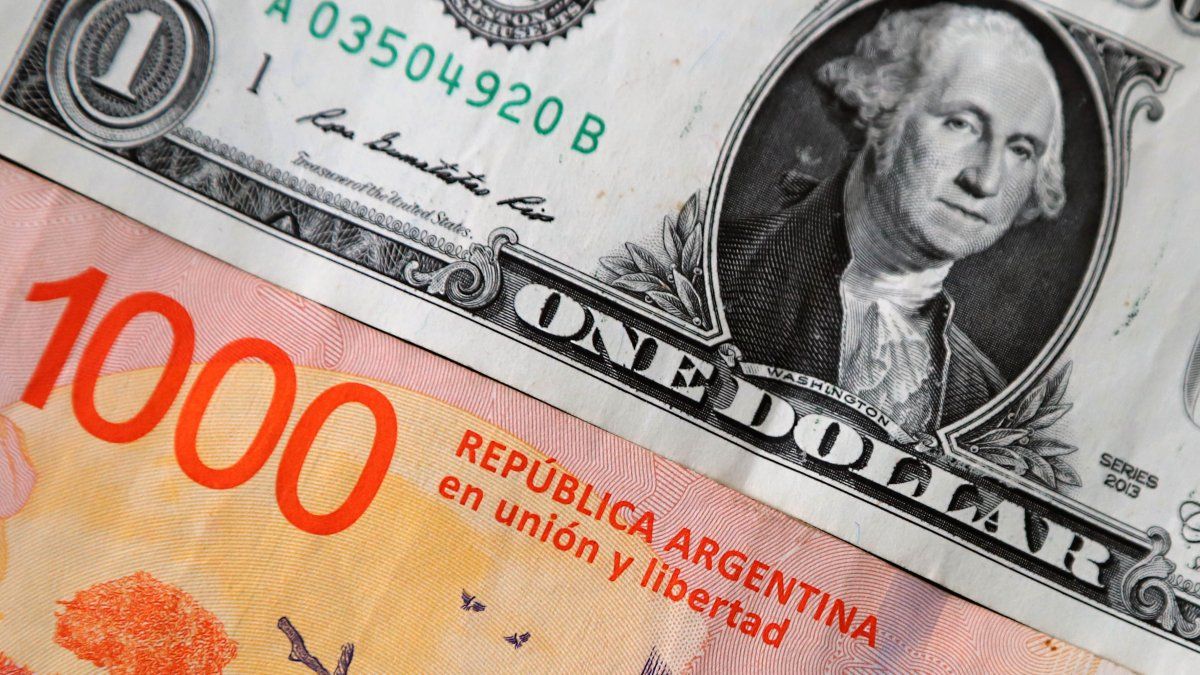Pure Brechism, the new discipline imposed by the dollar. Welcome to Argentina. The quote of Dolar blue ($1280 for sale) wakes up from its libertarian slumber, after several months of appreciation for the peso. They are not middle class buyers, no.
They are, in any case, those who with pesos in their pockets begin to see that Any means to become dollarized is good when the stocks set the rules. Sovereign debt falls and country risk rises. Many inconsistencies have been pointed out to Minister Luis Caputo in his plan. The most orthodox economists, the full establishment, have done it, from Miguel Ángel Broda, Ricardo Arriazu, Marina Dal Pogetto, Luciano Laspina, and many others, to Domingo Cavallo himself.. Precisely the latter comes from telling the President that he must unfold the market, a free financial dollar and a commercial one.
Aside from basic issues that should at least be mentioned, such as the exchange rate anchor of the crawling peg of 2%, the lowering of interest rates by the BCRA and even the – now dwindling – financial cycle promoted by the Government – the investors who sell their bonds and positions in pesos to buy dollars -, the concrete thing is that during these hours the demand for dollars is growing wherever you look.
Unforced errors and those of others: to issue pesos
The feeling is that the dollar is behind everything and that The Casa Rosada made a substantial mistake: it devalued the peso – and the savings of Argentines – with respect to all goods and services in the economy, but made it cheaper with respect to the dollar.
The last few months are evidence of that. The Government’s ultimate objective seemed to be, by means of stocks, to ensure that it bought cheap dollars to rebuild reserves and thus improve the BCRA’s balance sheet. Of course he issued pesos to be able to keep those dollars and that those pesos now go from one place to another, from the BCRA to the Treasury, a game of equals that, according to President Milei, is cleaning up the financial front.
Add to that the promise of dollar castling to importers via BOPREAL and the commitments assumed by the Treasury every time they endorse the old BCRA debt, much of it in dollars.
The secret data that moves the CCL dollar and the blue
Linked to the latter, perhaps there is a piece of information that we announced this week that could be making waves in the dollar market. There are more and more pesos in the monetary base and the Government is losing the ability to keep those pesos in check.. An immediate example. The stock of repos (money that the BCRA takes from the banks and these from the term-fixers) registered a drop of $10.9 billion on the Monday when last week’s tender was settled. According to market data, this represents 33% of the total stock of passes as of Friday, May 17. As the net financing of the tender was $8.6 trillion, the net result of Monday’s operation would have been an expansion of the monetary base of approximately $2.5 trillion, which is equivalent to 11% of it..
There is enough fuel there for a rise in the dollar, sponsored by lower rates and the different inconsistencies of the economic program which would be long to list. The liquidation of agriculture? It also contributes to fueling speculation in its declining cruising speed and in the message from the President who usually comes out to deny the exchange rate delay.because accelerating the devaluation would imply beginning to show that the decisions he made are generating a very clear limit for the future of the plan: at the beginning of the mandate, President Milei generated a huge devaluation, a 118% jump in the dollar, which implied a transfer of resources from the middle and lower class to the concentrated sectors of the economy.
Then deregulated the main goods and services consumed by Argentines, something that once again implied a second transfer. Furthermore, in recent months, liquefied the purchasing power of those pesos against goods and serviceswhile seeking to change relative prices (dollar still, energy up, salaries down) taking advantage of the waves of inflation generated by the Casa Rosada.
Now, problems appear. “There is no money,” say the families to pay the increase in electricity and gas, which necessarily implies a stoppage in the Government’s subsidy cutting plan. Add to that the action of the gap, the gap, that begins to draw the price of the CCL, blue or MEP dollar with respect to the official one and, on the other hand, the disincentive that it represents for agro-exporters to settle their sales against an official dollar at that you have to subtract the withholdings. It’s getting further and further away.
Source: Ambito




